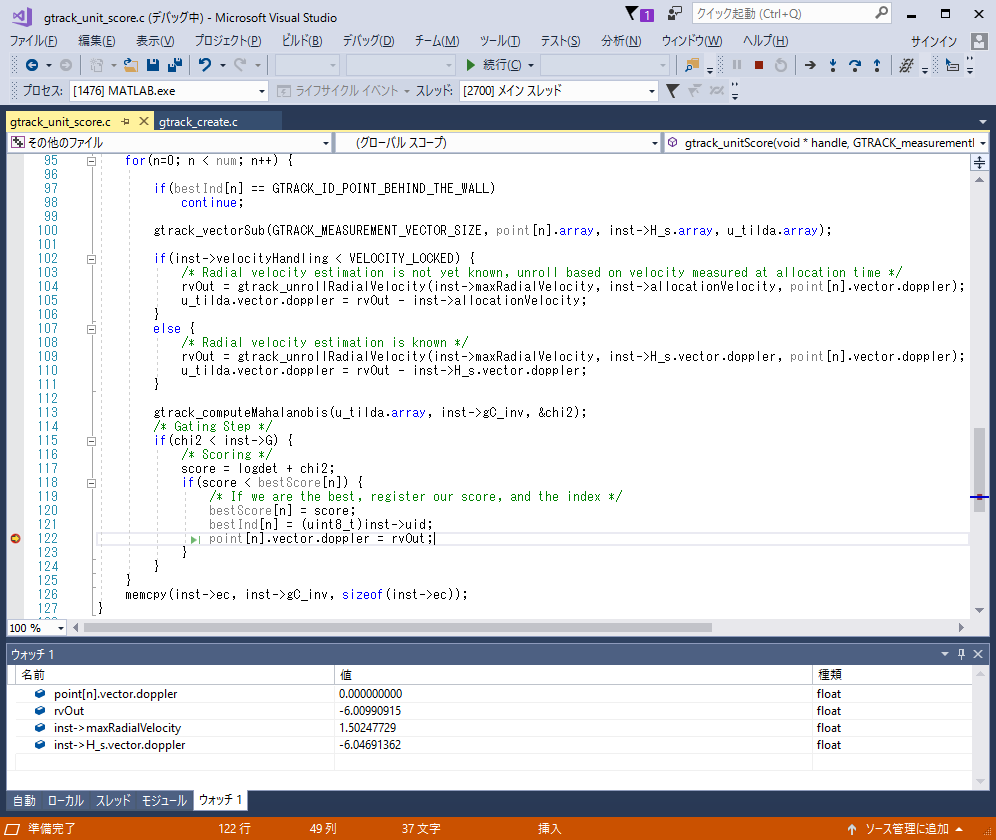Hello
I have a question about tracking ability of GtrackLib.
The parameter "GTRACK_STATE_VECTOR_TYPE" when generating the tracking module instance has the following four types.
typedef enum
{
/** @brief 2D motion model with constant velocity. State vector has four variables S={X,Y, Vx,Vy} */
GTRACK_STATE_VECTORS_2DV = 0,
/** @brief 2D motion model with constant acceleration. State vector has six variables S={X,Y, Vx,Vy, Ax,Ay} */
GTRACK_STATE_VECTORS_2DA,
/** @brief 3D motion model with constant velocity. State vector has six variables S={X,Y,Z, Vx,Vy,Vz} */
GTRACK_STATE_VECTORS_3DV,
/** @brief 3D motion model with constant acceleration. State vector has nine variables S={X,Y,Z, Vx,Vy,Vz, Ax,Ay,Az} */
GTRACK_STATE_VECTORS_3DA
} GTRACK_STATE_VECTOR_TYPE;
Of these, only "2DA" and "3DA" are supported.
Can "2DA" and "3DA" track the following vehicles properly?
- Vehicle that accelerates or decelerates after starting tracking.
- Vehicles repeating acceleration and deceleration after starting tracking.
- After starting tracking, decelerate to stop, and run vehicles again.
- Vehicle that decelerates to stop after tracking starts, and backs it.
- A vehicle that turns right or left after tracking starts.
Since the laboratory sample data has only vehicle data traveling at a constant speed and constant direction, the above pattern can not be confirmed.
Thank you.


